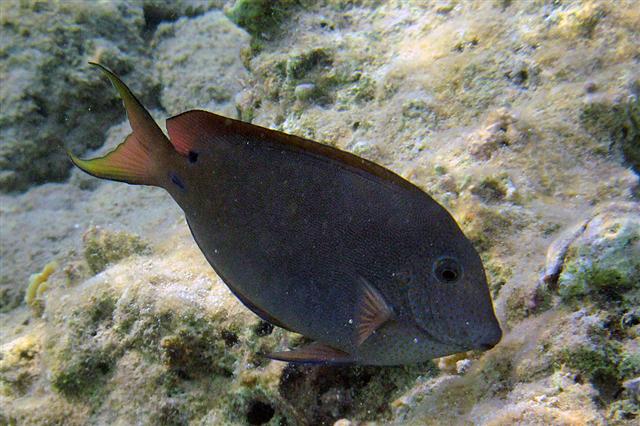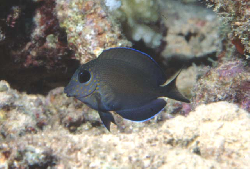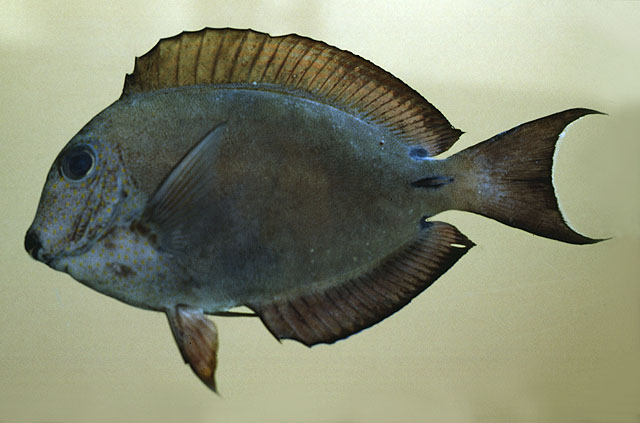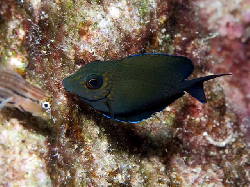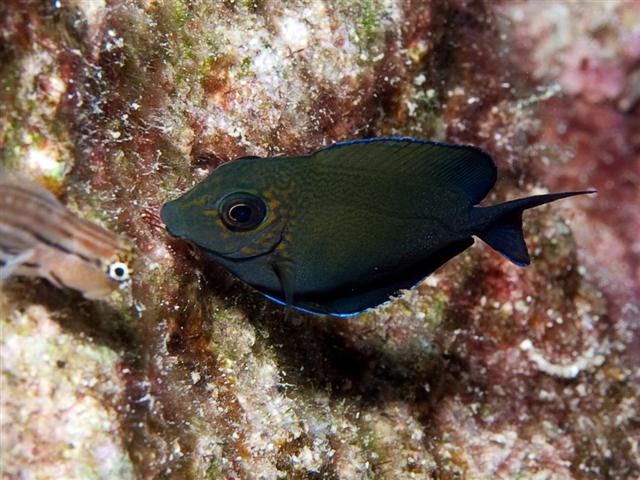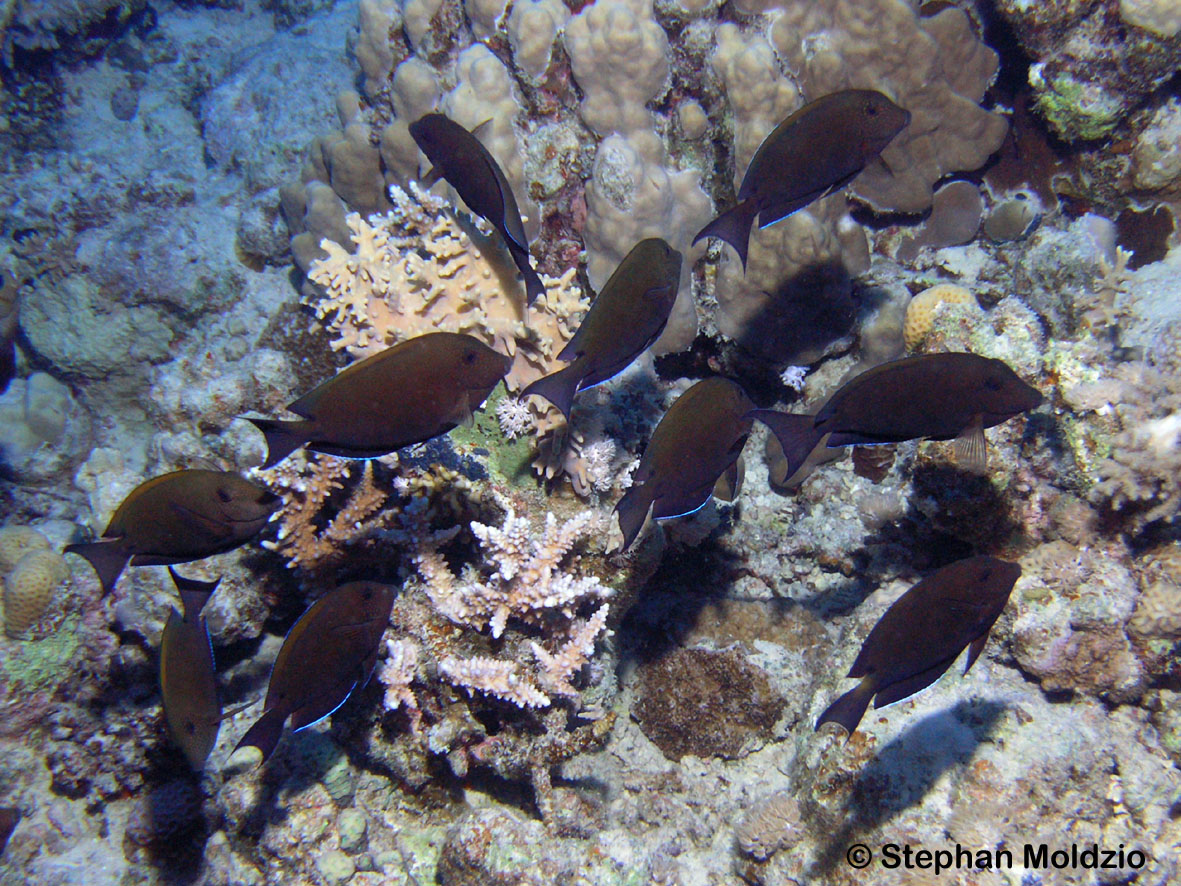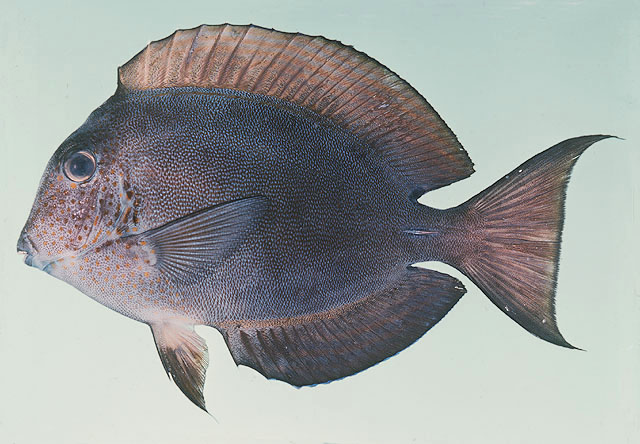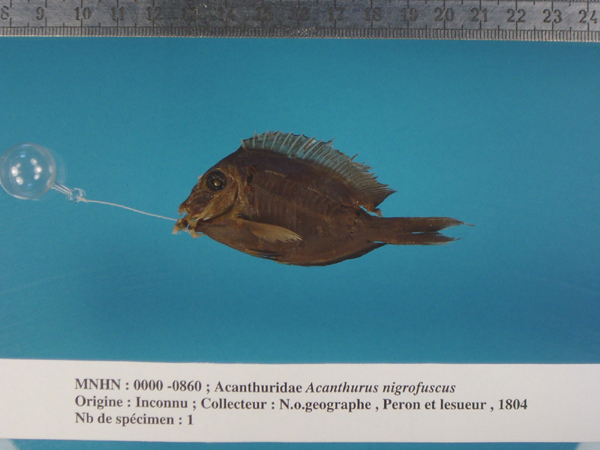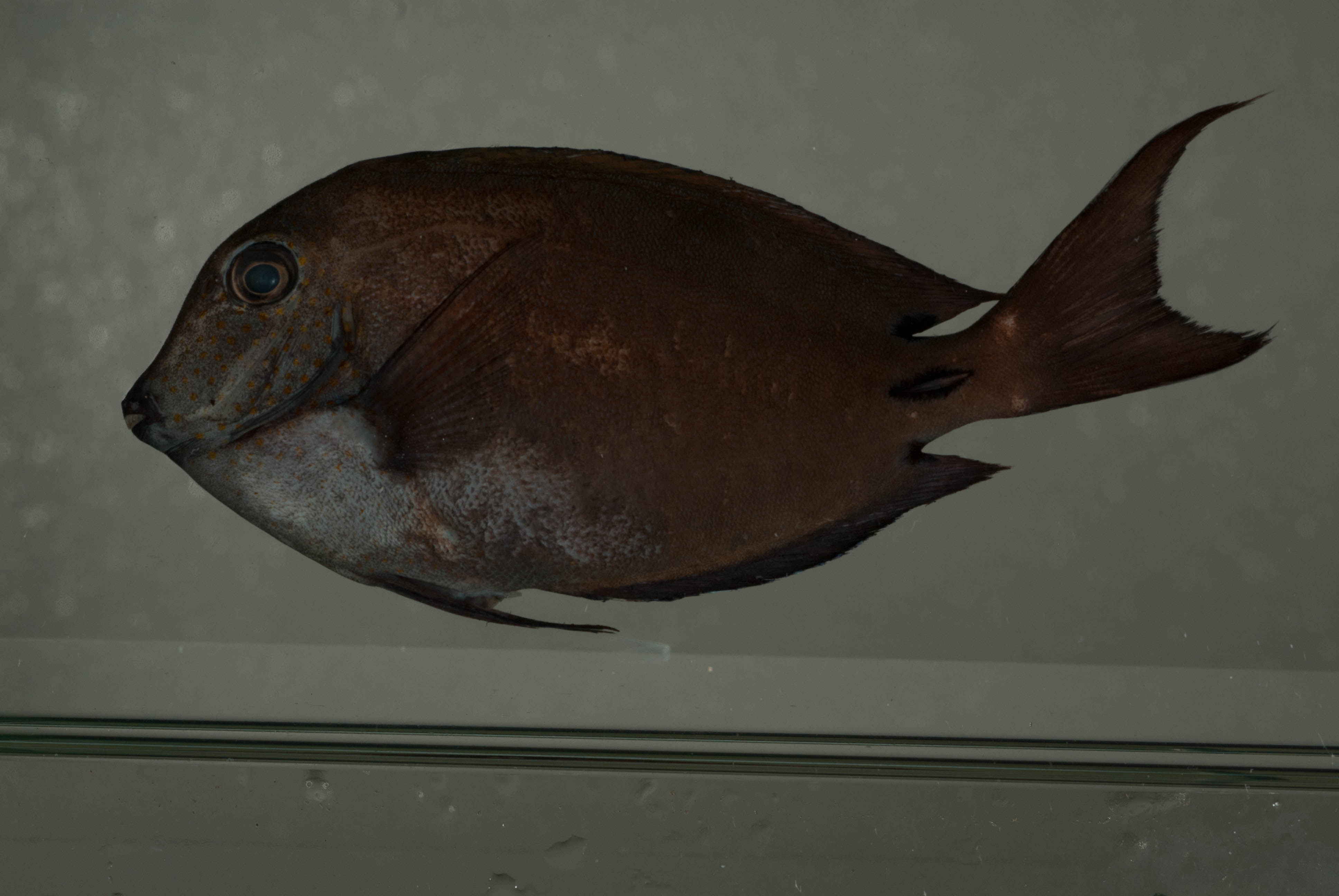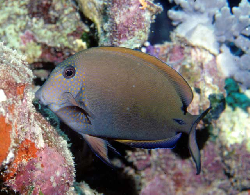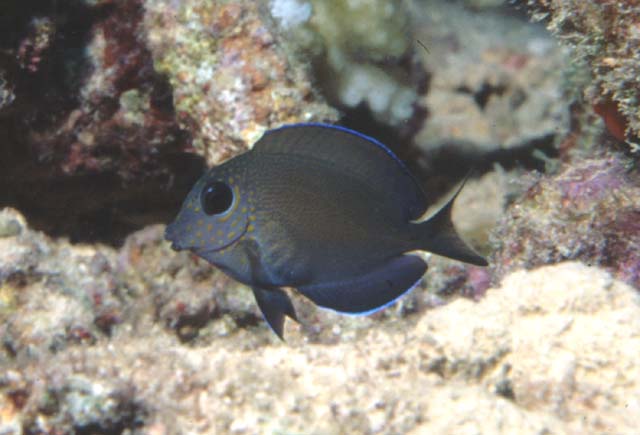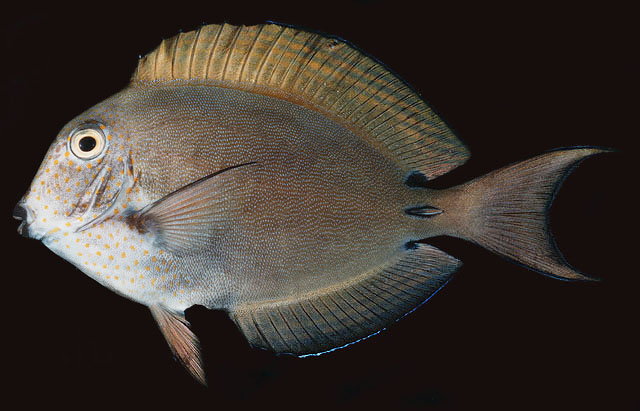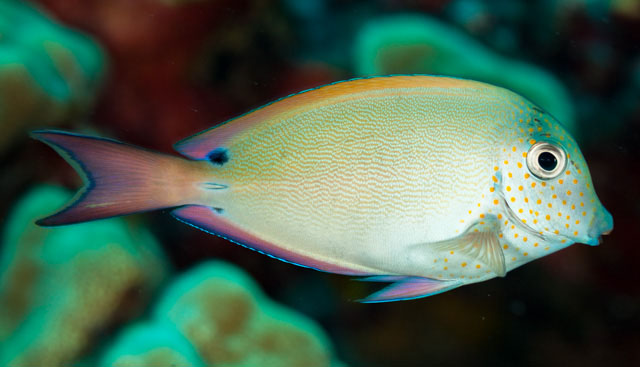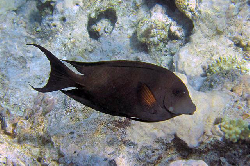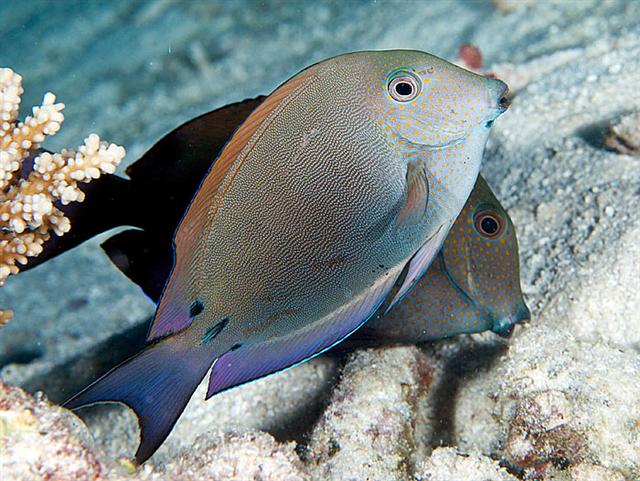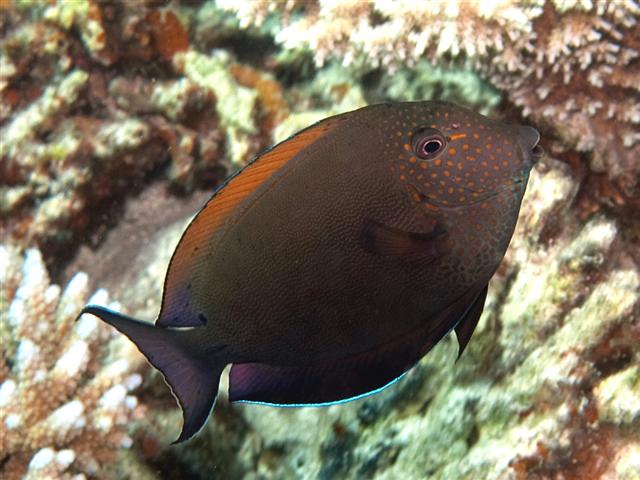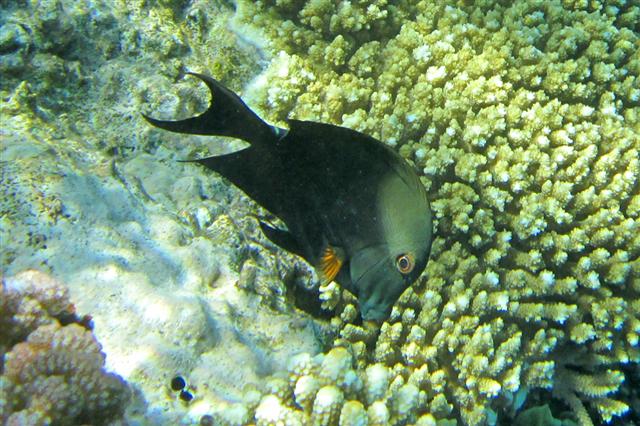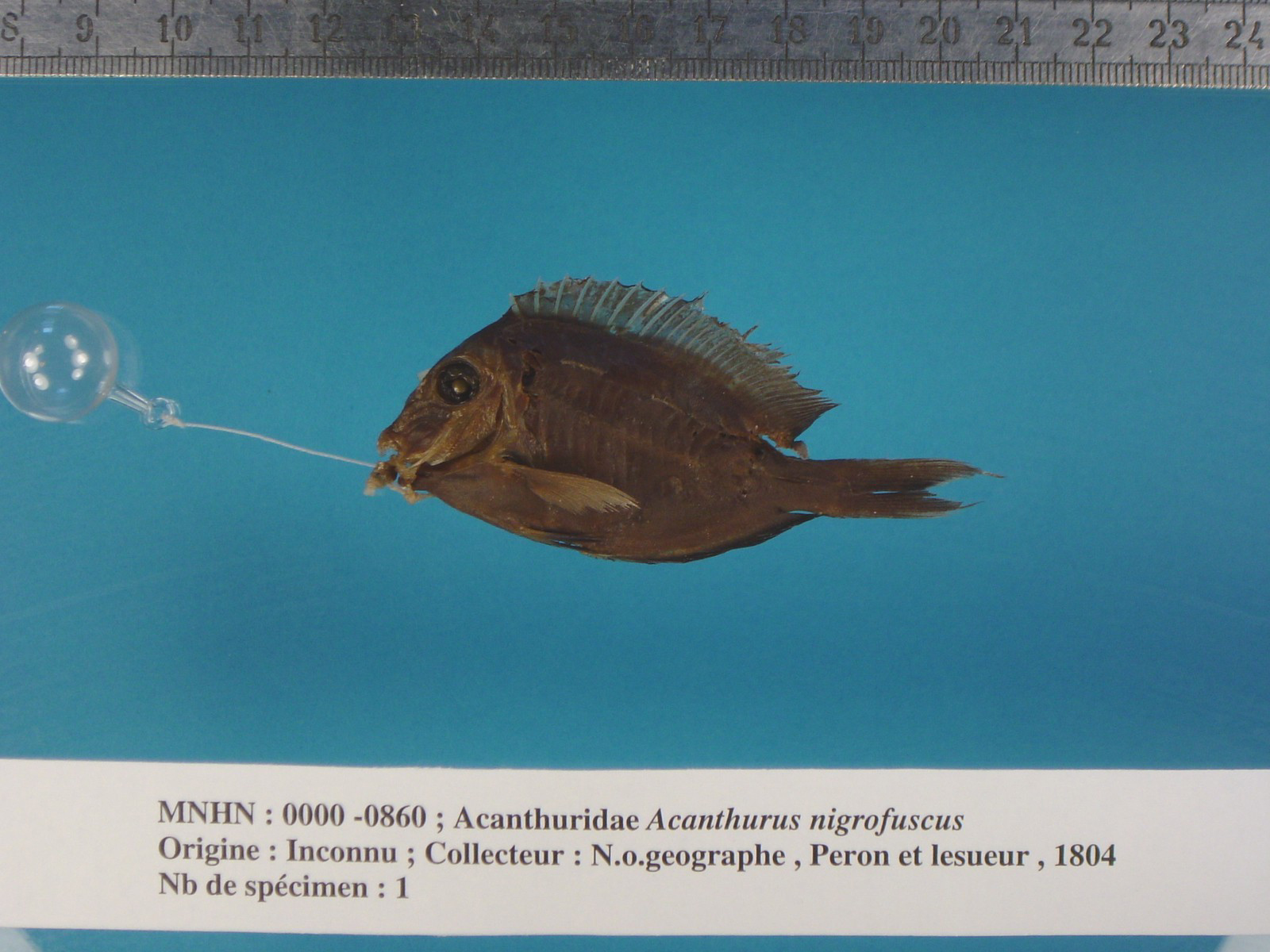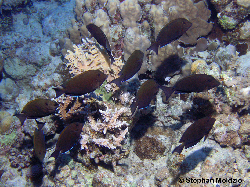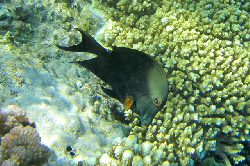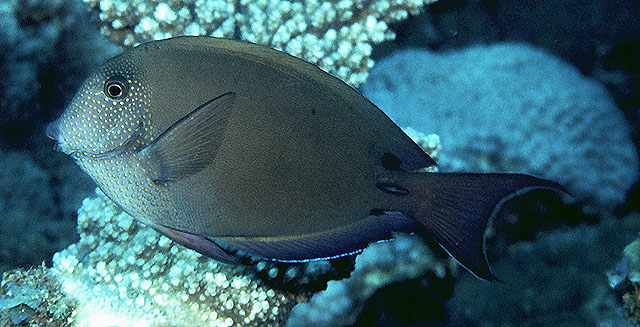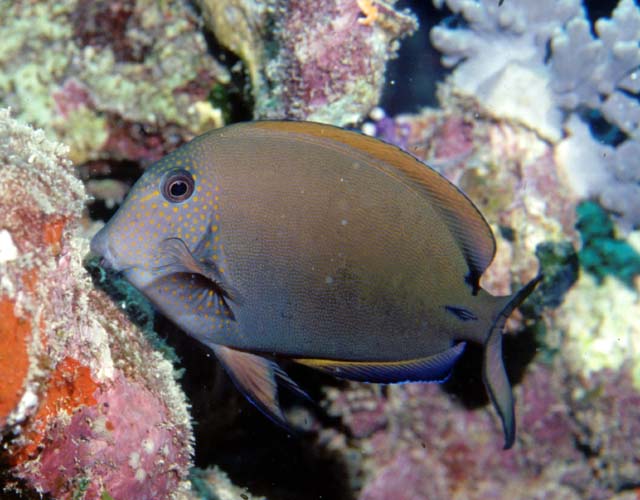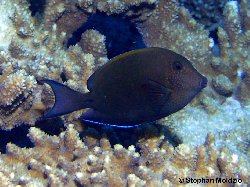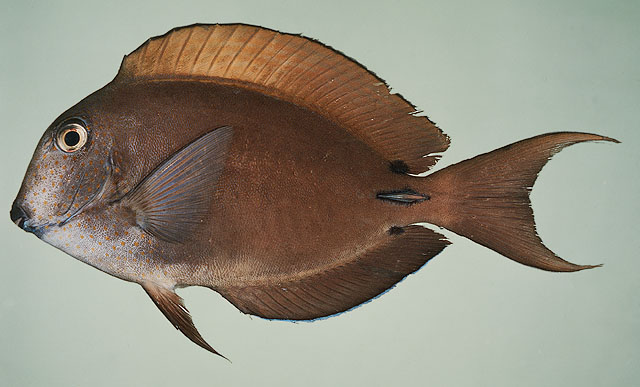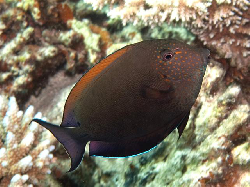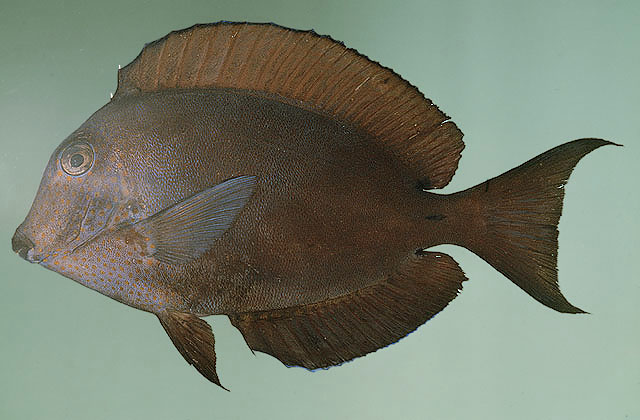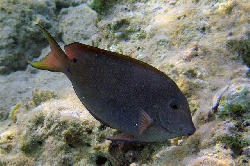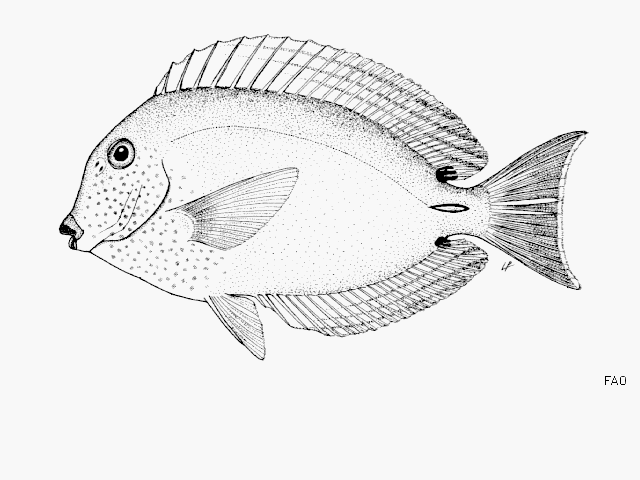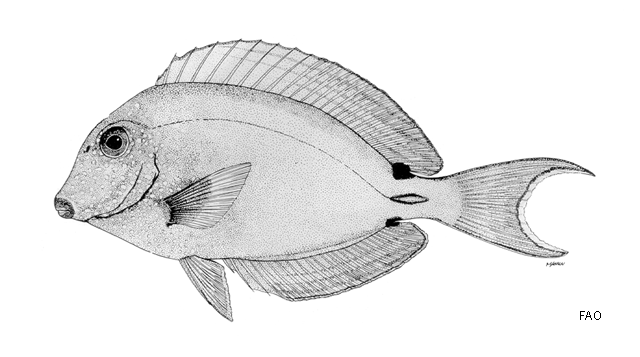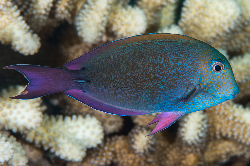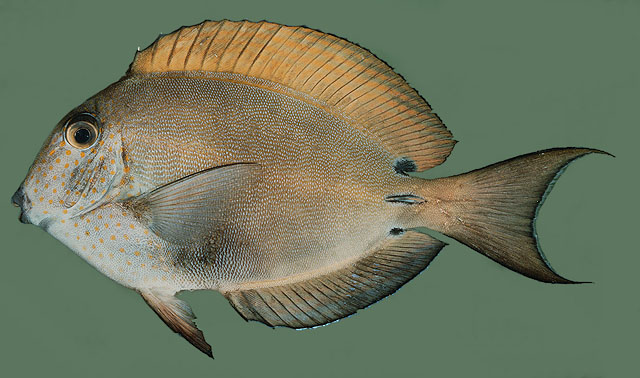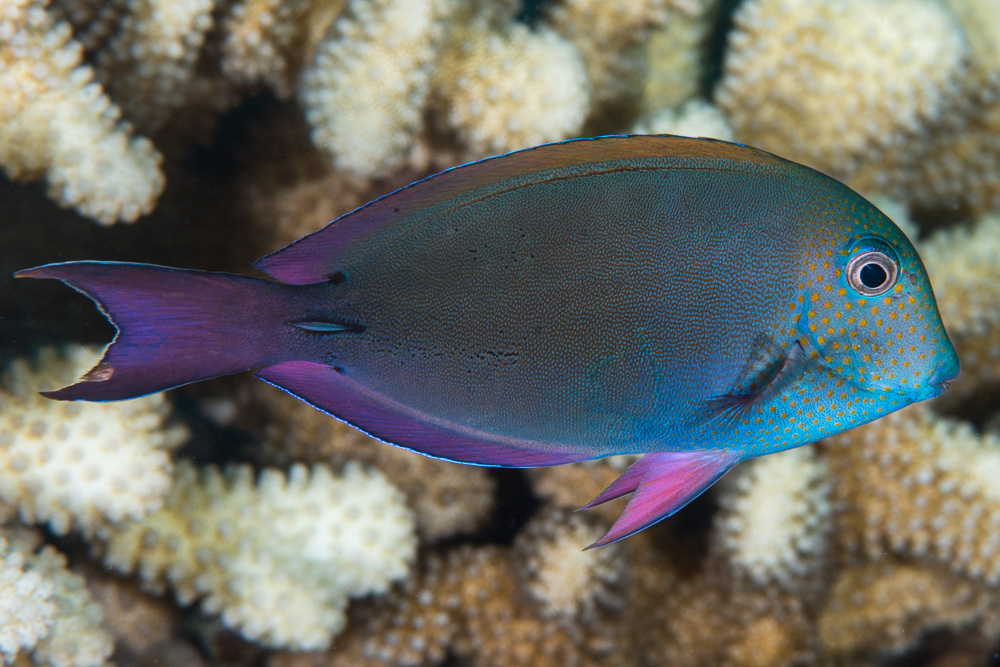Acanthurus nigrofuscus (Forsskål, 1775)
Description
Dorsal spines (total): 9; Dorsal soft rays (total): 24 - 27; Anal spines: 3; Anal soft rays: 22 - 24. Brown in color when preserved; with or without fine bluish gray longitudinal lines on body; pale pectoral fins with upper edge narrowly black; pelvic fins brown. Lips blackish brown; median upper teeth tend to be pointed. Dorsal fin base with a prominent black spot larger than 1/2 eye diameter; a smaller spot on base of anal fin. Groove of caudal spine encircled with a narrow black margin. Gill rakers on anterior row:20-24; on posterior row:18-23.
Common Names
No common names available.
Taxonomic Hierarchy
Kingdom: Animalia
Phylum: Chordata
Class: Teleostei
Order: Acanthuriformes
Family: Acanthuridae
Genus: Acanthurus
Species: Acanthurus nigrofuscus (Forsskål, 1775)
Climate Zone
Location
Biology
Found on hard substrates of shallow lagoon and seaward reefs from the lower surge zone to a depth of more than 15 m (Ref. 27825). Benthopelagic (Ref. 58302). Feed on filamentous algae. Form spawning aggregations (Ref. 27825, 48637). Adults usually in small groups, but form large schools in some oceanic locations. Juveniles are often seen in mixed species aggregations (Ref. 48637). Species at the bottom of the 'pecking order' among surgeon fishes, and as a result employs the strategy of feeding in large schools that overwhelm the territorial defenses of other herbivores (Ref. 1602). Caught with nets (Ref. 30573). Can be eaten both raw and cooked (Ref. 7364). Maximum depth reported at 25m (Ref. 027115)
Habitat
associated
Conservation Status
Least Concern
Threat to Humans
Reports of ciguatera poisoning
